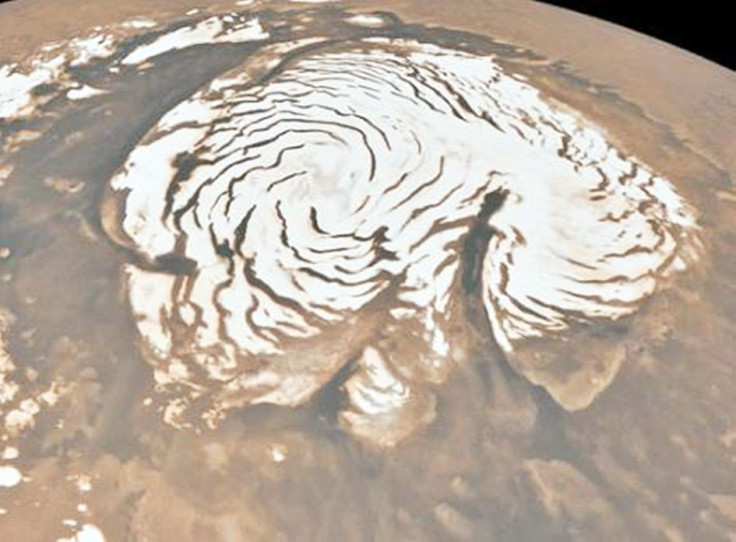Water On Mars: Did Scientists Finally Find Polar Ice Caps?

A recently discovered massive reservoir of frozen water ice mixed with sand is now being heralded as the third largest source of water on Mars.
Located two kilometers beneath Mars’ northern polar ice cap, this reservoir contains so much water ice it will submerge the entire planet to a depth of 1.5 meters (5 feet) if it’s melted on the surface.
"We didn't expect to find this much water ice here," said Stefano Nerozzi, lead author of the published new research about this finding. "That likely makes it the third largest water reservoir on Mars after the polar ice caps."
Nerozzi said the new research helps scientists pinpoint where water resources can be found on Mars. Where there’s water there’s life, even microbial life. In addition, water can be split into its main components, hydrogen and oxygen, to make rocket fuel.
"Understanding how much water was available globally versus what's trapped in the poles is important if you're going to have liquid water on Mars," said Nerozzi. "You can have all the right conditions for life, but if most of the water is locked up at the poles, then it becomes difficult to have sufficient amounts of liquid water near the equator."
This reservoir was discovered by the Shallow Radar (SHARAD) instrument aboard NASA’s Mars Reconnaissance Orbiter (MRO), which has been circling the planet for the past 13 years. SHARAD emits surface-penetrating radar waves that allowed Nerozzi’s team to discern the internal structures and composition of the underground structure.
The massive reservoir was detected within Mars’ northern cavi unit. A cavi unit is a deposit of multiple layers of water ice mixed in with sand that formed over hundreds of millions of years. SHARAD observations revealed horizontal slabs rich in ice sandwiched by alternating layers of sand
Data from SHARAD suggests the cavi unit consists of more water ice than sand, however, overturning the previous theory the cavi consisted mostly of sand. This finding means this reservoir is possibly the third-largest on Mars after the two polar ice caps.

The study believes these buried structures are the remnants of former ice caps that shrunk and were buried during warm periods.
“Surprisingly, the total volume of water locked up in these buried polar deposits is roughly the same as all the water ice known to exist in glaciers and buried ice layers at lower latitudes on Mars, and they are approximately the same age,” said Jack Holt, co-author of the study.
Published by Medicaldaily.com



























